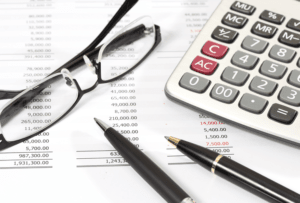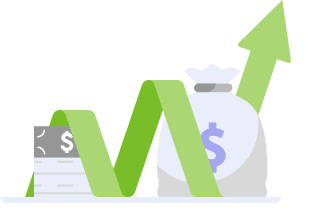
Total variable cost changes or increases as the level of total production increases and vice versa. If your income decreases, you must make massive cuts to your spending. If income increases, you should start moving most of the money to savings and investments. Variable costs are expenses that change proportionally with production volume, while marginal costs refer to the additional cost incurred when producing one more unit of a product. If production doubles to 200 cupcakes, variable costs rise to $300, making the total cost $2,300. The cost which remains constant at different levels of output produced by an enterprise is known as Fixed Cost.
- Fixed costs and variable costs are the two main types of costs a business can incur when producing goods and services.
- Generally speaking, having a clear idea of your company’s variable and fixed costs is one of the keys to better overall management of your business.
- While sunk costs may be considered fixed costs, not all fixed costs are considered sunk.
- Donna is the founder of X Factor Admissions and the popular blog Fencing Parents , the single most important reference source for college bound fencers interested in athlete recruitment.
- These fixed costs remain constant in spite of changes in output.
- For more resources on managing your business’s cost structure and optimizing your financial strategy, explore the comprehensive offerings at Financial Modeling Prep.
List all fixed expenses
- That is, your fixed costs are the same to produce 100 units as they are to produce 200 units, but your revenue doubles when you sell 200 units.
- Semi-variable is the type of costs with the characteristics of both fixed and variable costs.
- Checking it each month helps to see where adjustments are needed.
- These costs do not fluctuate with changes in output or sales revenue.
The greater the level of activity, the higher the total amount of variable costs. For example, a business rents a building for a fixed cost of $50,000 per month for five years. The rent will stay the same every month, regardless of the business’s profit or losses. Variable costs, however, do not remain the same and bookkeeping are usually directly linked to business activities. These are based on the volume of goods or services produced and the business’s performance.

Plan for irregular expenses
Jami has collaborated with clients large and small in the technology, financial, and post-secondary fields. Break-even analysis can also provide information about projected profits for those considering buying a business. The equation can help them calculate the number of units and the dollar amount needed to make a profit, and then decide whether these numbers seem credible and realistic.
Understanding Recurring Revenue: Why It’s Crucial for Startup Survival
Categorizing your budget correctly can help you track spending, identify areas to cut fixed vs variable costs costs, and plan for financial goals. By distinguishing between these two types of expenses, you can create a more predictable and flexible budget that suits your needs. If each box costs $0.50 and the bakery ships 1,000 cupcakes, packaging costs a total of $500.

Here’s everything you need to know about fixed vs variable costs, with examples from different industries to help make it stick. There are many ways that a business can reduce its variable costs. For instance, increasing output using the same amount of material can dramatically cut down costs, provided the quality of goods isn’t impacted. Fixed costs are normally independent of a company’s specific business activities.
Cutting variable expenses can make a big difference in a budget. Shopping with coupons, meal planning, and limiting takeout are good ways to save money. This might mean refinancing a loan, switching to a cheaper insurance plan, or canceling Grocery Store Accounting unused subscriptions. If revenue slows, businesses can immediately reduce these costs to conserve cash. Fixed salaries are paid consistently to full-time employees, regardless of business activity. For instance, the bakery’s manager earns $4,000 every month, whether it’s peak wedding season or a slow winter month.
Correcting Miscategorized Expenses in QuickBooks Online: A Complete Guide
Fixed costs are expenses that do not change regardless of the level of production or sales. These costs remain constant over a specific period and include items such as rent, salaries, and insurance. On the other hand, variable costs are directly related to the level of production or sales. They fluctuate as the volume of output changes and include expenses like raw materials, direct labor, and utilities.
Examples of variable costs
Fixed cost is referred to as the cost that does not register a change with an increase or decrease in the quantity of goods produced by a firm. Fixed costs are those costs that a company should bear irrespective of the levels of production. A bakery spends $1.50 on raw materials (flour, sugar, etc.) for each cupcake it produces. If demand for cupcakes increases and production rises from 200 cupcakes to 400, raw material costs double from $300 to $600. If demand drops and production falls to zero, raw material costs also drop to zero. Controlling variable and fixed costs also allows you to free up money to allocate for better purposes, such as creating new products or services or expanding into new markets.

Maximizing profitability comes down to effectively managing both fixed and variable costs. Your business should strive to keep its variable cost per unit as low as possible without compromising on quality—this ensures you’re getting as much profit as possible for each unit sold. Fixed costs remain constant regardless of production or sales volume. While this predictability is useful for budgeting, fixed costs can pressure cash flow during periods of low revenue. Businesses must meet these obligations (e.g., rent, salaries, loan repayments) even if their income drops.